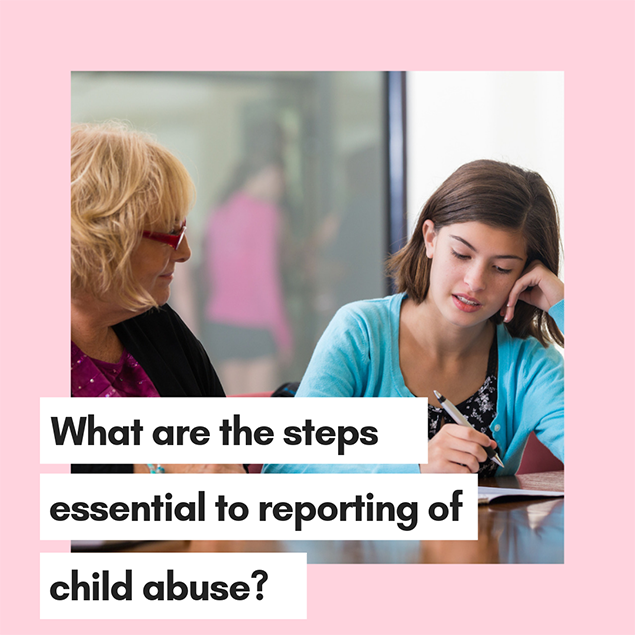Reporting Child Abuse: Steps to Taking Action
Posted by Network Support · Leave a Comment
Reporting Child Abuse: Steps to Taking Action
According to state laws, teachers are mandatory reporters of child abuse. This means that teachers are legally obligated to report any known or suspected cases of child abuse, be it physical, emotional, sexual or neglectful, to proper authorities. Many cases of child abuse go undetected and unreported due to:
- Poor knowledge of signs and behaviors demonstrated by victims of abuse.
- Poor understanding of reporting procedures and protocols.
- Prevalence of doubts such as credibility of claims and lack of proper evidence.
Sometimes teachers may even hesitate to report abuse because the perpetrator may be friend, colleague, or community member.
Regardless of these challenges, the primary responsibility of teachers is towards the welfare and safety of students, and as such, it is crucial that teachers report any abuse. Here are some measures that can help teachers with the process of reporting.
Prepare: In addition to state laws and regulations, every school must develop a specific procedure for reporting cases of child abuse. Administrators can plan for workshops to help educate teachers about:
- Different types, signs and behaviors of abuse that aid in identifying cases of abuse.
- The correct channels of reporting (within school and to Child Protection Services).
- How to file reports – to whom, how, where and what to report, format and style of reporting and other necessary information that must be included in reports.
- Consequences of failure to report of cases of child abuse.
Preparation is key to early detection of cases of abuse and it helps teachers to be vigilant and sensitive to changes in their students.
When in doubt, report: The law urges mandated reporters to report even of suspected cases of abuse. This is because even the slightest delay due to reasons such as lack of evidence or doubtful claims may result in delayed protection of students from further abuse. Despite not being 100% sure of the situation, teachers should still voice any concerns as soon as they suspect abuse.
Seek Assistance: Teachers can seek the assistance, advice or support from other members of the reporting team such as school counselors and principals before reporting cases of abuse. Teachers who are new to reporting can learn additional tips from any staff who have had experience reporting of cases of abuse.
Check on progress: The role of the teacher does not stop with reporting. The caseworker assigned to the case may seek additional information from the teacher. Teachers can assist by:
- Documenting and submitting all evidence of concerns and claims with correct dates and times for use in court if necessary.
- Being available to clarify questions and concerns regarding the case.
- Helping the caseworker understand the student better.
Do’s and Don’ts: Before reporting teachers must:
Do’s:
- Put the student at ease and interview them in a comfortable manner.
- Encourage students to recount the issue at their pace and without passing comments or judgements on the student.
- Prepare detailed documentation of signs and behaviors observed as evidence of suspected or actual abuse.
Don’ts:
- Ask student specific closed-ended leading questions that might influence their reports.
Child abuse is a serious offense threatening the welfare and safety of students. By reporting abuse teachers can put a stop to further abuse against the student. Teachers must therefore remain committed to their role as mandated reporters and report every case of suspected abuse.
Like this article for teachers?
Browse the Professional Learning Board COURSE CATALOG to find related online courses for teachers in your state. Professional Learning Board is a leading provider of online professional development classes that teachers use to renew a teaching license or renew a teaching certificate.





